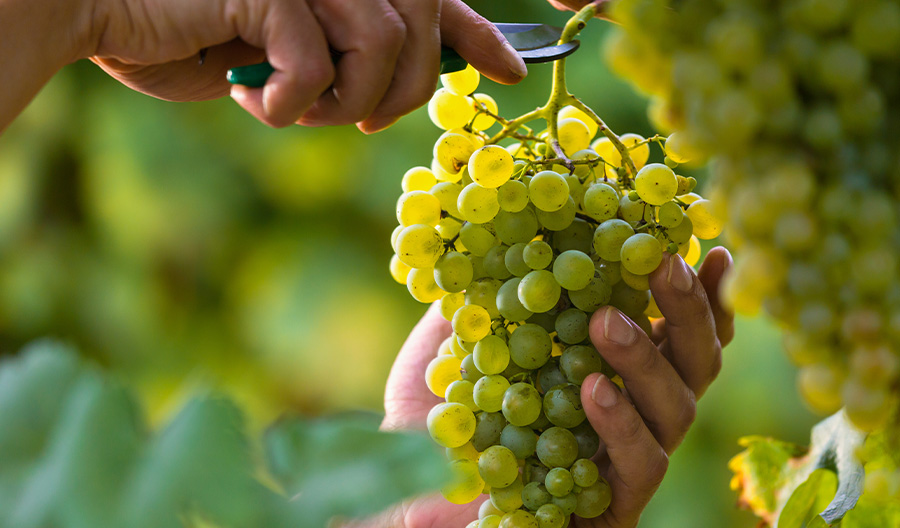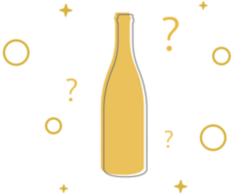You likely know that the three main grapes for Champagne are Chardonnay, as well as Pinot Noir and Pinot Meunier, the only two red grapes in the region. The three varieties account for about 99% of the region’s plantings.
But did you know that there are actually eight permitted varieties that can be grown in Champagne?
The others are Pinot Gris, Pinot Blanc, Petit Meslier and Arbane, all white varieties that make up less than .3% of plantings. And, most recently, in 2021, Champagne producers were allowed to start planting Voltis, a white, fungus-resistant hybrid grape.
Chardonnay
With the amount of Blanc de Blancs Champagnes found in wine shops and on restaurant menus, you wouldn’t be wrong to think that Chardonnay is very widely planted. But of the main three, it’s the least planted grape variety in Champagne, comprising just over 25,000 acres. In fact, Chardonnay-based Champagnes make up less than 5% of the category.
Due to its mild flavor profile, Chardonnay can be influenced by winemaking decisions rather easily. Its inclusion can add acidity, structure and freshness.
Pinot Noir
Pinot Noir is a staple in Champagne blends, and the most widely planted variety in the region, encompassing more than 32,000 acres. That’s more than Pinot Noir’s ancestral home, Burgundy. It’s one of just two allowable red grapes in the region, along with Pinot Meunier. They’re responsible for Blanc de Noirs Champagnes, or white wine made from black-skinned grapes.
Pinot Noir, often described as delicate, brings body to the wine, that mouth-filling, structural texture. It also adds lovely aromatics to the blend.
Pinot Meunier
Though historically a blending grape, Pinot Meunier has become a star in its own right in recent years, with 100% Meunier Champagnes becoming increasingly more popular.
Pinot Meunier brings those coveted red berry flavors to the fore, but it also balances the overall blend. About 26,000 acres of Meunier are planted in the region.

Pinot Blanc
Pinot Blanc is a white grape variety, but it’s related to Pinot Noir. A color mutation makes certain genes that produce pigment inactive, which creates this white version of Pinot Noir. Its berry size and leaf shape have often been confused with Chardonnay, a distant cousin to Pinot Blanc.
Pinot Blanc has always been grown in Burgundy and Champagne, but Alsace holds the largest plantings in France, with nearly 8,300 acres. Pinot Blanc brings a strong floral profile to the bouquet of the wine and some racy acidity to the palate.
Pinot Gris
Also known by its historic name, Fromenteau, this pink-skinned grape is well known in still wine, but it’s also one of the seven permissible varieties in Champagne. It’s also a color mutation of Pinot Noir. When blended, Pinot Gris offers fruit and richness.
Petit Meslier
One of the most obscure varieties in Champagne, Petit Meslier has searing acidity that prevails in even the warmest of years. Like Pinot Blanc, it’s a relative of Chardonnay. One of its “parents” is Gouais Blanc, also a parent of Chardonnay that crossed with another little-known variety, Savagnin.
The flavors in Petit Meslier are often vegetal and can be reminiscent of Sauvignon Blanc. A major bonus is that it’s resistant to frost, the main enemy of Champagne vineyards.
Arbane
Arbane might be the rarest Champagne grape of all, with just 2.5 acres planted across France in 2006. It’s a light yellow, very late-ripening grape with overbearing acidity that often requires a lot of attention for the low yields that it produces. The flavors are often herbal or green.
Voltis
Still only grown by a small handful of Champagne houses, Voltis was created by “France’s INRA and Germany’s Julius Kühn as part of a project launched in 2000 to develop PIWI (fungus-resistant) varieties,” according to The Drinks Business. It’s one of several fungus-resistant hybrids developed to help winemakers cope with a changing climate. As of now, if winemakers utilize the grape, it can only make up to 10% of the overall Champagne blend.

